Stanrail Puts Painting on the Fast-Track
When Stanrail—a manufacturer of rail car doors—sought to paint large parts using a system that occupies only a small amount of real estate, it turned to a supplier for assistance…
Stanrail Corporation (Gary, IN) is a major supplier of rail car doors to the railroad industry. An offshoot of Stanray Products, which manufactured railroad freight car parts, it was established in May 1983 and entered the door business in 2002.
Stanrail made a decision to invest in a painting system and wanted to allocate only 7,000 sq ft to the painting operation. All other aspects of the production process are performed in-house. Given the fact that rail car doors tend to be rather large, this made for a challenging task.
Seeking assistance with the project, Stanrail was referred to JBI Spray Booths (Osseo, WI), a manufacturer of custom equipment for a variety of finishing industries. JBI won the job based on its ability to design and install a complete system in minimal time at an affordable price.
“We had an idea of what we wanted and how to do it,” said Rich Rentschler, plant manager of Stanrail’s door facility. What Stanrail wanted was nothing less than the ability to paint 40 doors per shift with a 10-man crew, all while using as little of the plant’s real estate as possible.
In addition to meeting Stanrail’s demand for the ability to paint 40 doors per shift, the JBI system was designed with a few other factors in mind. For one, not all freight car doors are created equal. Not only are there different types of doors (plug doors and sliding doors), but the doors are manufactured in a variety of sizes, ranging from 8 ×12 ft to 12 × 12 ft. Additionally, the doors are odd-shaped (tall and wide, but very thin) and feature lots of nooks and crannies. The paint system was designed with these specifications in mind.
Six months after first being approached by Stanrail, JBI had designed, manufactured, delivered and installed an indexing paint system that met all of Stanrail’s requirements and occupied a mere 7,000 sq ft.
Anatomy of a Paint System
Once a door is loaded on to the overhead conveyor, its first stop is a degreasing station, where it is treated with a coconut-oil-based degreaser/cleaner called Eagle Kleen. Eagle Kleen is biodegradable, non-hazardous and contains no VOCs, so it can be washed right down a drain without being treated. It can be used at ambient temperature, so there is no need for heating a tank solution, which translates to a cost-savings for Stanrail.
The Eagle Kleen degreaser is applied manually by two operators stationed on opposite sides of the door. Because the doors are so large, they remain stationary while the operators move around them using pneumatic lifts. JBI and Stanrail are planning to replace the manual application system with an automatic system that will make the process even more efficient.
Once the part leaves the degreasing station, it travels into a rinse station. There, it runs through three rinse cycles—a hot rinse, a cold rinse and then a sealing rinse to help prevent corrosion. “The rinse station is the key to the entire system,” said Mr. Rentschler. The time that the door spends at the rinse station sets the standard—or index time—for every other aspect of the painting operation.”
After rinsing, the doors head into a high velocity, heated dry-off oven where they are dryed. Afterward, the doors travel through two down draft paint booths. The booths are identical to one another, except for the fact that the operator positions himself on opposite sides of each booth so that they can paint opposite sides of the door. (The purpose for having two paint booths as opposed to one is so that the operators don’t paint each other accidentally.) As with the degreasing station, the paint booths use pneumatic platforms to move the operators around the part.
The paint that is used to coat the doors is a waterborne coating supplied by Carbit Paint Company. It is supplied to both booths from a single 275-gallon tote, using a paint application system manufactured by SAMES KREMLIN. Because freight car doors are exposed to the elements on a regular basis, the paint is applied with a heavy mil-thickness to prevent rusting and corrosion.
Once the door exits the second paint booth, it enters a cure oven where it is exposed to high velocity, heated air. Upon exiting the oven, the parts are unloaded and bundled for shipping.
The Nerve Center
One of the key features of the paint system is the PLC-based control system. Featuring an Allen-Bradley panel view with touch screen controls, the control panel functions as the paint system’s “nerve center,” and enables the line operators to keep close tabs on every aspect of the operation, and make adjustments if necessary.
“We can monitor the entire line from here,” says Mr. Rentschler. “Line speed, oven temperatures, wash temperatures, wash time, drain time – there’s nothing that we can’t control.”
The Most Valuable Component
The single-most valuable component of the job was not a washer or paint booth, but rather the relationship between finisher and supplier. “Stanrail was not very familiar with systems, so there was a lot of meetings and discussions to come up with a system that would serve Stanrail now and into the future,” said JBI’s Dave Rohland. “They were really good to work with.”
Mr. Rentschler agrees. “JBI has been great to work with. They have listened to our requests and followed-through on them and/or improved upon them. Any job of this magnitude has some start-up problems, but JBI has been with us all the way through.”
Related Content
Epoxy Rebar Company Reinforcing Roads of the Future
Providing epoxy-coated rebar with the ultimate corrosion resistance is Simcote’s focus for the infrastructure industry it serves.
Read MoreTop Shop’s Journey to Building a Unique Brand
Since this new Ohio plater took over the space and assets of a former plating business, it is intentional about setting itself apart from prior ownership.
Read MoreTitrations: To Automate or Not to Automate?
What considerations should you keep in mind for automatic titrations? Conor McAnespie of Hanna Instruments discusses the benefits of auto titrators.
Read MoreRead Next
A ‘Clean’ Agenda Offers Unique Presentations in Chicago
The 2024 Parts Cleaning Conference, co-located with the International Manufacturing Technology Show, includes presentations by several speakers who are new to the conference and topics that have not been covered in past editions of this event.
Read MoreEducation Bringing Cleaning to Machining
Debuting new speakers and cleaning technology content during this half-day workshop co-located with IMTS 2024.
Read MoreDelivering Increased Benefits to Greenhouse Films
Baystar's Borstar technology is helping customers deliver better, more reliable production methods to greenhouse agriculture.
Read More




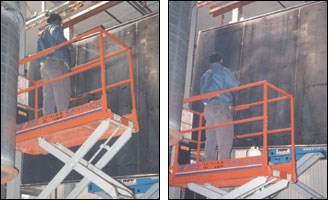
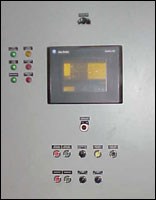
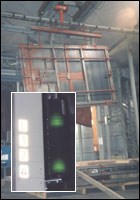
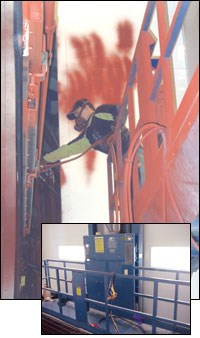
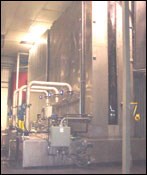













.jpg;maxWidth=300;quality=90)







